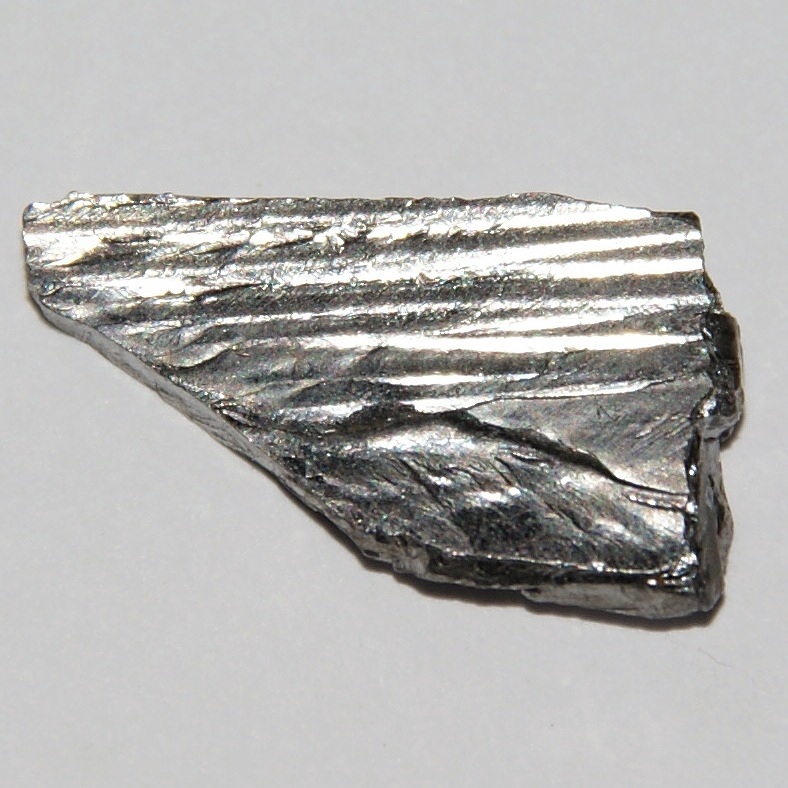Tantalum (Ta) is ductile, easily fabricated, highly resistant to corrosion by acids, and a good conductor of heat and electricity and has a high melting point. The major use for tantalum, as tantalum metal powder, is in the production of electronic components, mainly tantalum capacitors. Major end uses for tantalum capacitors include portable telephones, pagers, personal computers, and automotive electronics. Alloyed with other metals, tantalum is also used in making carbide tools for metalworking equipment and in the production of superalloys for jet engine components.
The United States must import all of its niobium and tantalum source materials for processing, although a project is currently underway in Nebraska that would be the only niobium mine and primary niobium processing facility in the United States. Brazil and Canada are the major producers of niobium mineral concentrates, and Australia, Brazil, and Canada are the major producers of tantalum mineral concentrates.
Why Is Tantalum A Critical Raw Material?
Tantalum exemplifies a critical raw material due to the United States’ complete dependence on foreign sources. The U.S. hasn’t mined tantalum since 1959, and domestic resources remain low-grade and commercially unviable, resulting in 100% import reliance. This total dependence creates significant vulnerability, especially given that major suppliers include China (22% of imports) and politically unstable regions like the Democratic Republic of Congo and Rwanda. The concentrated nature of global production, with few viable sources, amplifies supply chain risks.
The metal’s strategic importance stems from its irreplaceable role in high-tech and defense applications. Tantalum is essential for semiconductor manufacturing, where it’s used in capacitors and sputtering targets – components critical for modern electronics. Its unique properties, including high melting point and corrosion resistance, make it vital for aerospace superalloys, military electronics, and medical implants. While substitutes exist, such as niobium or ceramics, they result in performance degradation or higher costs, making tantalum effectively irreplaceable for optimal performance in these critical applications.
Current market dynamics underscore tantalum’s criticality. The CHIPS and Science Act has allocated $34 billion for domestic semiconductor manufacturing across 32 projects, which will dramatically increase demand for tantalum components. This surge in demand coincides with heightened geopolitical tensions, evidenced by the September 2024 imposition of 25% tariffs on critical minerals from China, including tantalum. The market has already shown volatility, with U.S. apparent consumption jumping 75% in 2024 and prices fluctuating significantly in recent years. This combination of zero domestic production, concentrated foreign supply chains, essential strategic applications, and rapidly growing demand driven by semiconductor reshoring initiatives firmly establishes tantalum as a critical raw material requiring careful supply chain management and strategic planning.
20 Interesting Facts About Tantalum
- Atomic number 73 – Tantalum sits in Group 5 of the periodic table, making it a refractory metal alongside niobium, its chemical twin.
- Melting point of 3,017°C (5,463°F) – The fourth highest melting point of all elements, exceeded only by carbon, tungsten, and rhenium.
- Extremely corrosion resistant – Tantalum is immune to attack by all acids except hydrofluoric acid at room temperature, making it more corrosion resistant than glass.
- Biocompatible metal – The human body doesn’t reject tantalum, making it ideal for surgical implants, skull plates, and bone replacement pins.
- Density of 16.69 g/cm³ – Nearly twice as dense as steel but only about 60% as dense as tungsten.
- Discovered in 1802 – Swedish chemist Anders Ekeberg named it after Tantalus from Greek mythology, because the element’s oxide was “tantalizingly” insoluble in acids.
- Always found with niobium – These two elements are so chemically similar that they weren’t recognized as separate elements until 1844, over 40 years after tantalum’s discovery.
- Superconducting properties – Pure tantalum becomes superconducting below 4.5 K (-268.65°C), though tantalum carbide has a higher transition temperature of 10.35 K.
- Exceptional capacitance – Tantalum forms an extremely thin, stable oxide layer (Ta₂O₅) that serves as an excellent dielectric, enabling the highest capacitance per volume of any capacitor type.
- Ductile and malleable – Can be drawn into fine wires or hammered into sheets thinner than paper without breaking, unusual for such a hard metal.
- Blue color when powdered – While bulk tantalum is gray, finely divided tantalum powder appears blue due to light interference effects.
- Gettering properties – Tantalum can absorb 740 times its own volume of hydrogen gas at 500°C, making it useful for removing trace gases in vacuum systems.
- Tantalum-180m isotope – The only naturally occurring nuclear isomer, with a half-life exceeding 10¹⁵ years, making it one of the most stable excited nuclear states known.
- Work function of 4.25 eV – This moderate electron emission threshold makes tantalum useful for electron gun cathodes and field emission devices.
- Thermal expansion coefficient of 6.3 µm/m·K – Very low thermal expansion, about half that of steel, contributing to dimensional stability in precision applications.
- Forms carbides harder than diamond – Tantalum carbide (TaC) has a Mohs hardness of 9-10 and the highest melting point of any binary compound at 4,150°C.
- Neutron absorption cross-section of 20.6 barns – Moderate neutron absorption makes it useful in nuclear reactor control systems without being as “neutron-hungry” as hafnium.
- Oxide capacitance of 100 nF/mm² – The tantalum pentoxide dielectric layer is only about 0.01 micrometers thick per volt, enabling extreme miniaturization.
- Young’s modulus of 186 GPa – Stiffer than titanium but more flexible than tungsten, providing an optimal balance for spring applications.
- Chemical passivation mechanism – The protective Ta₂O₅ layer self-heals instantly if scratched, similar to aluminum but effective even in extremely aggressive chemical environments.
Thanks for reading!
